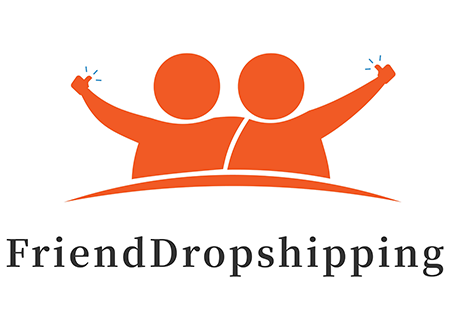Table of Content
Introduction to Dropshipping: What is it and How Does it Work?
- Explanation of the dropshipping model.
- Benefits and drawbacks.
- Comparison with traditional retail.
Starting a dropshipping business is a great way to enter e-commerce with minimal investment. But what is dropshipping, and how does it work? This guide explains this business model, its pros and cons, and how it differs from traditional retail.

What is Dropshipping?
Dropshipping is a retail fulfillment method where a store doesn’t keep the products it sells in stock. Instead, when a store sells a product, it purchases the item from a third party—usually a wholesaler or manufacturer—and has it shipped directly to the customer. As a result, the merchant never sees or handles the product.
This business model eliminates the need for the retailer to maintain inventory, manage storage, or handle shipping logistics. It allows entrepreneurs to focus on marketing and customer service, making it an attractive option for those looking to start an online business with limited resources.

How Does Dropshipping Work?
Here’s a step-by-step breakdown of the dropshipping process:
- Customer Places an Order: A customer visits your online store and places an order for a product.
- Order Forwarded to Supplier: You receive the order and forward the purchase details to your supplier.
- Supplier Ships the Product: The supplier packages and ships the product directly to the customer.
- Customer Receives the Product: The customer receives the product, often unaware that it came from a third party.
This streamlined process is facilitated by various e-commerce platforms and dropshipping apps, which automate much of the order forwarding and tracking.

Benefits of Dropshipping
1. Low Startup Costs
One of the biggest advantages of dropshipping is the low initial investment required. Since you don’t need to purchase inventory upfront, the costs associated with starting a dropshipping business are significantly lower compared to traditional retail. This makes it an accessible option for entrepreneurs with limited capital.

2. Reduced Overhead
Without the need for a physical store or warehouse, overhead costs such as rent, utilities, and storage are minimized. This allows you to allocate more resources to marketing and growing your business.

3. Wide Product Selection
With dropshipping, you can offer a vast array of products without having to purchase them in advance. This flexibility allows you to test new products with minimal risk and adjust your offerings based on market demand.

4. Location Independence
Dropshipping businesses can be run from anywhere with an internet connection, giving you the freedom to work remotely. This location independence is particularly appealing for digital nomads and those seeking a flexible lifestyle.

5. Scalability
As your business grows, you won’t need to worry about managing or stocking more products. Your suppliers handle inventory and shipping, allowing you to focus on scaling your marketing efforts and expanding your customer base.

Drawbacks of Dropshipping
1. Lower Profit Margins
Because you’re not buying products in bulk, your profit margins can be lower compared to traditional retail. Additionally, the high level of competition in the dropshipping space can drive prices down, further squeezing your margins.

2. Inventory Issues
Since you’re relying on suppliers to maintain stock, you might face out-of-stock situations, leading to potential customer dissatisfaction. Effective communication with your suppliers and real-time inventory management tools can help mitigate this risk.

3. Shipping Complexities
If you’re working with multiple suppliers, shipping costs and times can vary, making it harder to provide consistent shipping experiences to your customers. Consolidating your suppliers or clearly communicating shipping policies on your website can help address this challenge.

4. Supplier Dependence
Your business’s reputation hinges on the reliability of your suppliers. Poor quality products or delayed shipments from your supplier can negatively impact your customer satisfaction. Building strong relationships with reliable suppliers is crucial for maintaining your business’s reputation.

5. Limited Control
You have less control over product quality, packaging, and shipping times, which can affect the overall customer experience. Regularly reviewing supplier performance and gathering customer feedback can help you maintain high standards.

How to Get Started with Dropshipping
1. Choose a Niche
Selecting a profitable niche is a crucial first step in starting a dropshipping business. Conduct market research to identify a niche with high demand and low competition. Consider your interests and expertise, as this can help you better understand your target market and create compelling marketing content.

2. Find Reliable Suppliers
Finding reliable suppliers is essential for the success of your dropshipping business. Friend dropshipping assists you to find the right factory, get competitive prices, ensure quality, track your order throughout, and delivery goods to your customer’s door.

3. Set Up Your Online Store
Choose an e-commerce platform such as Shopify, WooCommerce, or BigCommerce to set up your online store. Customize your store’s design, set up payment gateways, and configure shipping settings. Make sure your store is user-friendly and optimized for conversions.

4. Create High-Converting Product Pages
Your product pages play a crucial role in driving sales. Include high-quality images, detailed product descriptions, and clear pricing information. Use persuasive copywriting techniques to highlight the benefits and features of your products.

5. Implement Effective Marketing Strategies
Attracting traffic to your store is essential for generating sales. Implement a mix of digital marketing strategies such as search engine optimization (SEO), pay-per-click (PPC) advertising, social media marketing, and email marketing. Experiment with different marketing channels to find what works best for your business.

6. Provide Excellent Customer Service
Customer satisfaction is key to building a successful dropshipping business. Respond to customer inquiries promptly, handle returns and refunds professionally, and strive to exceed customer expectations. Positive reviews and word-of-mouth referrals can significantly boost your business’s reputation.

Conclusion
Dropshipping offers a unique opportunity for aspiring entrepreneurs to enter the e-commerce space with lower risks and costs. By understanding how dropshipping works, its benefits, and potential drawbacks, you can make an informed decision about whether this business model is right for you. As with any business venture, success in dropshipping requires dedication, strategic planning, and continuous learning. Stay tuned for more detailed guides and tips on how to start and grow your dropshipping business.
Want to get the best price from the manufacturer? Fulfill your orders fast and stable?
I’m Cassiel, assist you grow your Shopify business rapidly, start with your order fulfillment quickly now.
Join to newsletter.
Follow us and get more knowledge.





